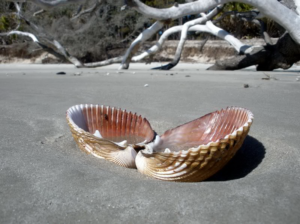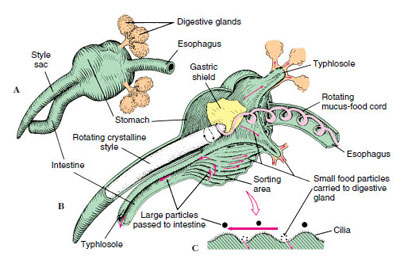
Ark Clams
Ark Clams Family: Arcidae
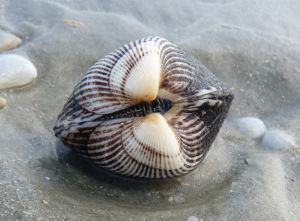 Ark Clams are members of family Arcidae, thus the name “ark”. Characteristics are thick and heavy shells, with a predominantly radiating sculpture.
Ark Clams are members of family Arcidae, thus the name “ark”. Characteristics are thick and heavy shells, with a predominantly radiating sculpture.
Arks vary both in shape and size. A few species inhabit Barnegat Bay, although there are about 200 species worldwide.
Arks are box-like bivalves with thick, heavy shells that can withstand strong currents and waves.
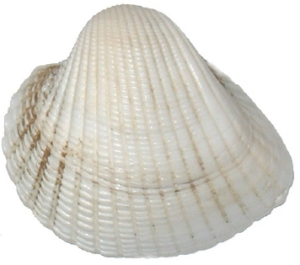 The shells of ark clams are often white or cream, but in certain species, the shell is striped with, tinted with, or completely colored with a rich brown.
The shells of ark clams are often white or cream, but in certain species, the shell is striped with, tinted with, or completely colored with a rich brown.
The shell of most species has a thick layer of brown covering the harder calcareous part of the shell.
Arks live in the sandy or muddy bottom of the bay and inshore and offshore in the ocean.
Their anatomy is similar to the hard clam and begin life as larvae eventually setting on the bottom and growing to maturity.
Blood arks can live up to 5 years while ponderous arks can live up to 10.
Blood Ark Anadara ovalis
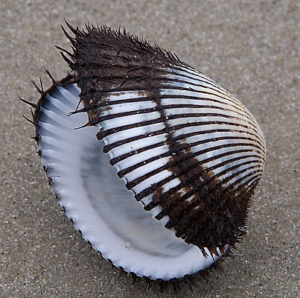 Blood Ark is a white bivalve.
Blood Ark is a white bivalve.
The shell frequently appears to have dark brown fur growing on the lower two-thirds of its shell.
This is actually the periostracum, a covering of non-calcareous material.
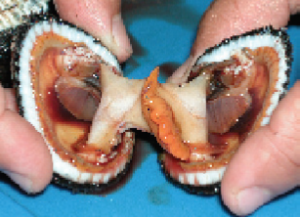 The Blood Ark is sometimes called the “Bloody Clam” because when opened it is red.
The Blood Ark is sometimes called the “Bloody Clam” because when opened it is red.
Unlike most mollusks whose blood is clear the blood of the Blood Ark has hemoglobin and consequently red blood
Mistaken Identity Blood clam Tegillarca Granosa
Not from the United States
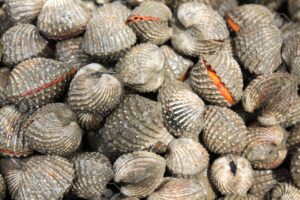 The Blood Clam or Blood Cockle Tegillarca Granosa is not found in Barnegat Bay.
The Blood Clam or Blood Cockle Tegillarca Granosa is not found in Barnegat Bay.
It is found throughout the Indo-Pacific region from the eastern coast of South Africa northwards and eastwards to Southeast Asia, Australia, Polynesia, and up to northern Japan.
Since they have red blood like the Blood Ark an internet search can lead to the misidentification .
It has a high economic value as food, and it is kept in aquaculture.
Ponderous Ark Noetia ponderosa
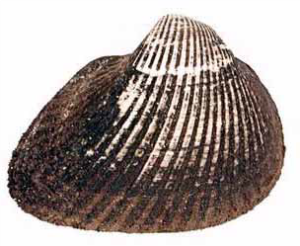 The ponderous ark has a very thick and heavy for its size. It has distinct radiating ribs and the rear margin of the bivalve slopes down from the hinge/beak area.
The ponderous ark has a very thick and heavy for its size. It has distinct radiating ribs and the rear margin of the bivalve slopes down from the hinge/beak area.
The off-center, very prominent beak points toward the rear of the shell. The hinge has comb-like teeth which are visible along the length of the hinge line.
The shell may reach a length of 2½ inches. (Looking at the inside of the shell, you will notice that the shape is trapezium-like.)
 Like the blood ark, the ponderous ark has a brown velvety periostracum that covers most of the shell.
Like the blood ark, the ponderous ark has a brown velvety periostracum that covers most of the shell.
The image to the right illustrates the beak on both the upper and lower valves.
